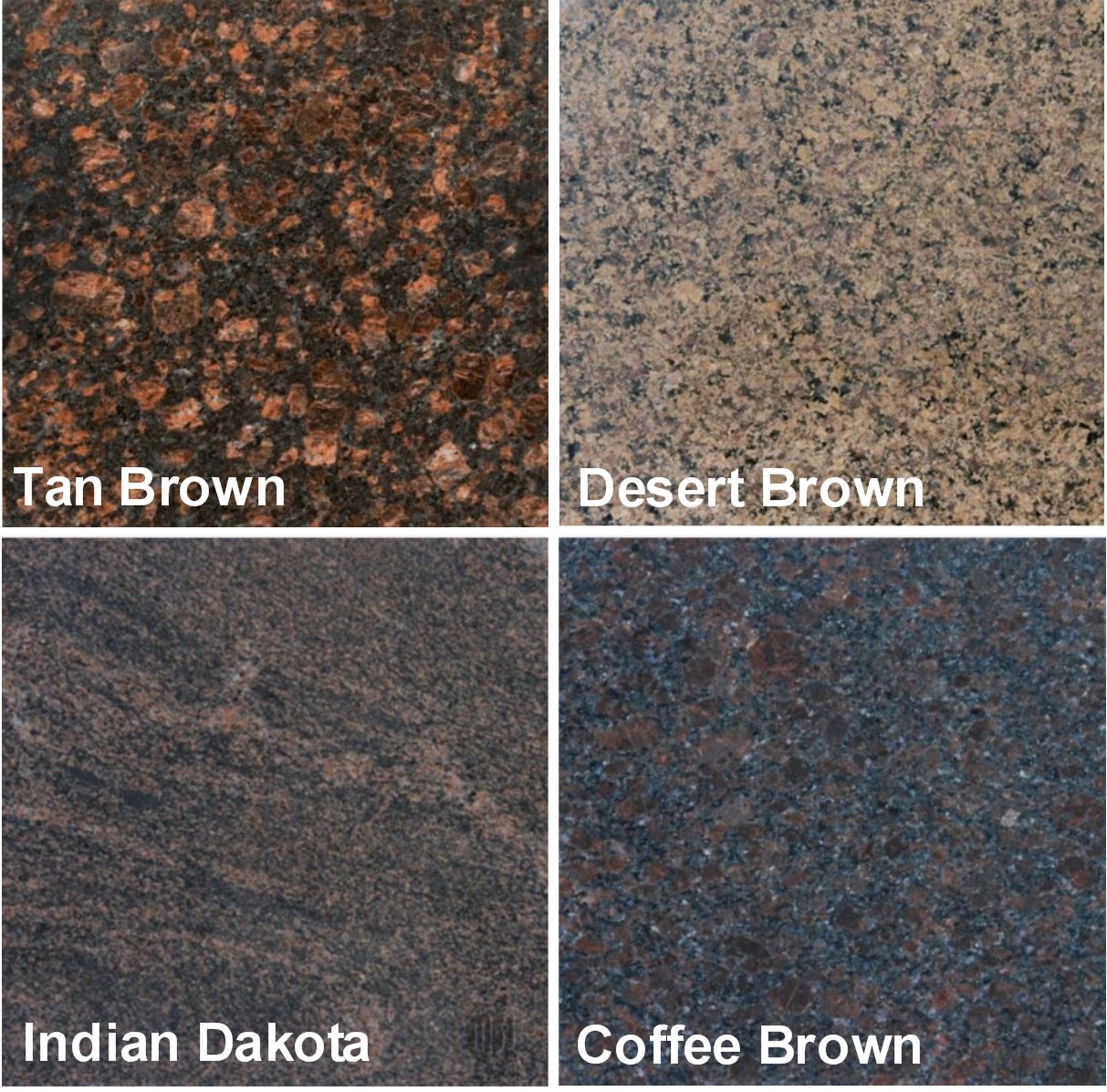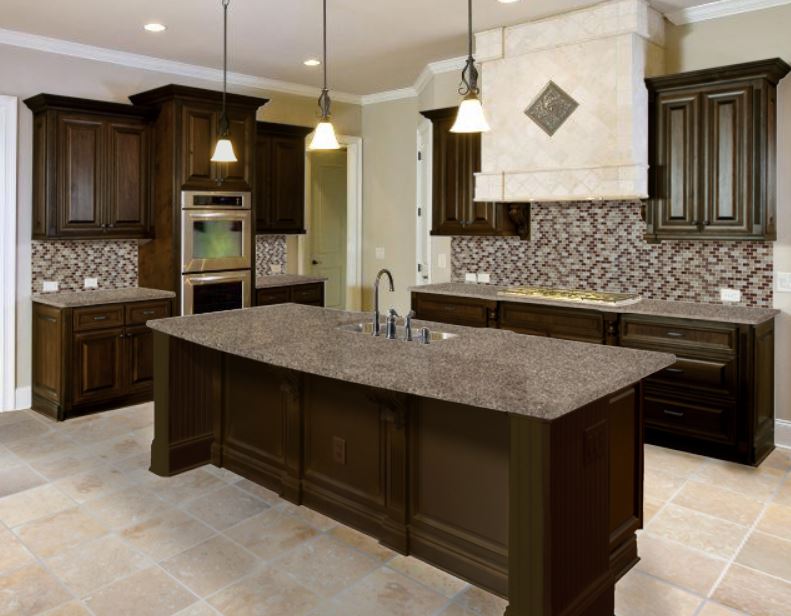Countertops: All Around Brown
November 11, 2013Rediscover an old favorite for countertops: The Color Brown
Color choice is always an interesting topic, particularly when there are so many color options out there and yet certain classic colors stand above the rest as highly popular year after year. Previously, we have discussed whites, greys, and golds – basic colors that never go out of style and can create moods and change the architectural look of spaces. In this discussion, we’ll rediscover the color brown and its most popular variations for granite countertops, including those from India: Tan Brown, Coffee Brown, Desert Brown, and Indian Dakota.

1. Brown is versatile. Whether it is a highly complex pattern or a simple one, brown elevates brilliant colors around it to heighten their interest. Conversely, it also works as a gentle neutral when light or dark to blend into the environment. Coupled with black, brown looks rich and expensive (check out Tan Brown and Desert Brown); coupled with lighter shades on the same color palette, the look is elegant but playful.
2. Brown creates depth. Just as greys and whites can be used to create light and shadows, so too does brown create depth and complexity to a color scheme. Indian Dakota for granite countertops is a good example – it is a mix of darker browns and lighter brown highlights that make the surface feel like anything but a flat one. Throughout a room, splashes of dark and light brown can define areas and make them seem larger or smaller depending upon their use.
3. Brown is rich. As mentioned, brown is very versatile and can be paired with brilliant colors or muted colors for different purposes. Whichever you choose, brown has an unique ability to always look very rich and expensive. Brown rarely looks cheap or washed out. Paired with greys and blacks, brown looks sophisticated (see Coffee Brown). Paired with pastels, browns tend to bring a richness to the design and keep the look contemporary.
4. Brown is comfy. There’s a reason lounges, clubhouses, and billiard rooms utilize rich, brown leather furniture and dark brown woods. Brown makes for a relaxing environment that envelopes the visitor. In terms of countertops, brown does the same. It makes the space feel warmer, cozier and inviting and lends itself to traditional, organic design schemes rather than high contemporary. Just like black and white photos tend to feel formal, sepia photos create a sense of warmness for comfortable reflection.

5. Brown is masculine – and feminine. As previously discussed in our blogs on greys and whites, by nature, “neutrals” are fairly gender neutral. A white room can belong to either a man or a woman. The same is true for grey. When it comes to brown, it can be gender neutral, but brown can also define one gender or the other. A room with light browns, white ceiling and colorful accents can be lovely and distinctly feminine when paired with bold reds or lovely pastels. A room with darker browns, or mixes of both dark and light, with creams, rich greens, and warm wood colors can feel decidedly masculine.
6. Brown is warm. Designers love brown because it can warm a room that feels too large or empty. Unlike brilliant colors like red or bright blue which can also enlarge but can also overwhelm a room when used liberally, brown may be used freely to define sections or give the feeling of a smaller, more intimate space. On countertops, brown can blend into the cabinetry or stand out, equally lending a warmth to the room.
7. Brown is forgiving. One never likes to think of a countertop being dirty, but life is busy. Unlike a white countertop, brown disguises imperfections. Though spills and debris should be cleared from a granite countertop or porcelain tile right away, this is not always possible during a gathering or on a hectic morning. Brown will be your partner in crime.
8. Brown doesn’t absorb. We previously wrote about how white can actually absorb and reflect colors around it. (Remember how a red vase against a white wall can create a pink halo?) Designers love this effect because they can add interesting color to a space without having to commit to it. Brown’s effect is just the opposite, similar to greys. It doesn’t absorb or change based on the colors around it. This means you can control the room and not worry that changes in flooring, cabinetry, wall paint, mosaics or small countertop appliances will alter their look. For some, this stability is as desirable as changeability.
9. Brown is flexible. We’ve mentioned that grey is sophisticated and elegant. Black is mysterious and contemporary. Brown manages to be both of these, falling somewhere in the middle. At once it can be rich and expensive looking and relaxed and inviting. This means it is as at home in a kitchen or bathroom as it is in a living area or formal dining room. While some colors might have trouble translating from one room to the other (imagine pulling seafoam green from the bathroom and putting it into the family den), brown is a universal color that retains formality while also feeling comfortable.
If you are looking to granite countertops or porcelain tile for your next project, consider the color brown. It contrasts beautifully with white or wood cabinetry, accents stainless steel appliances nicely, and adds a depth and complexity to the room. Visit MSI’s Kitchen Visualizer to experiment with granite selections like Tan Brown, Coffee Brown, Desert Brown, and Indian Dakota.

